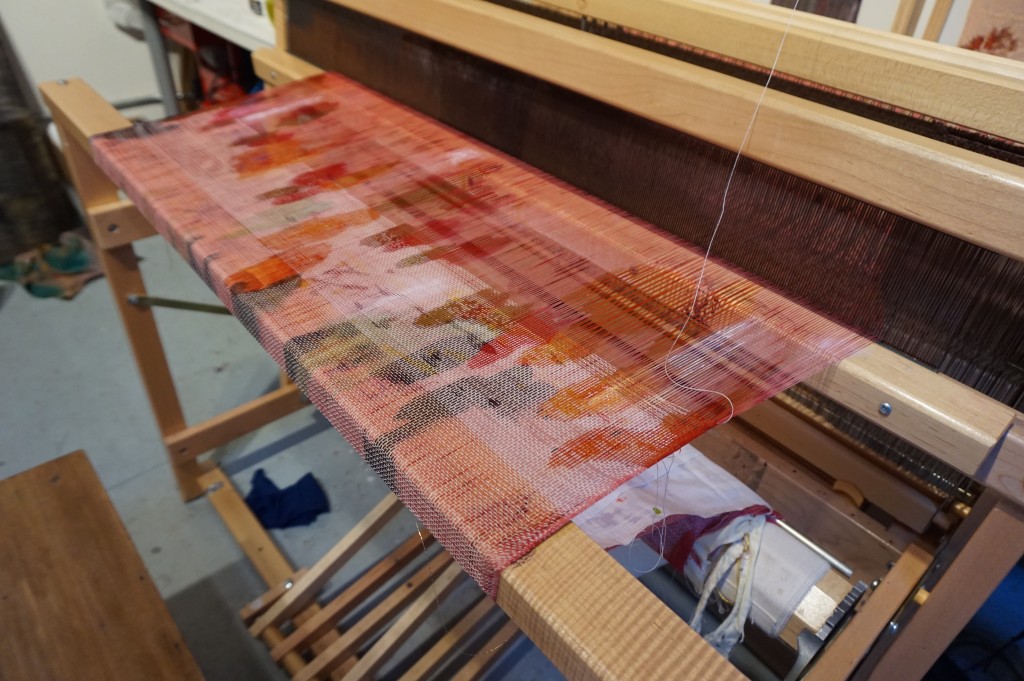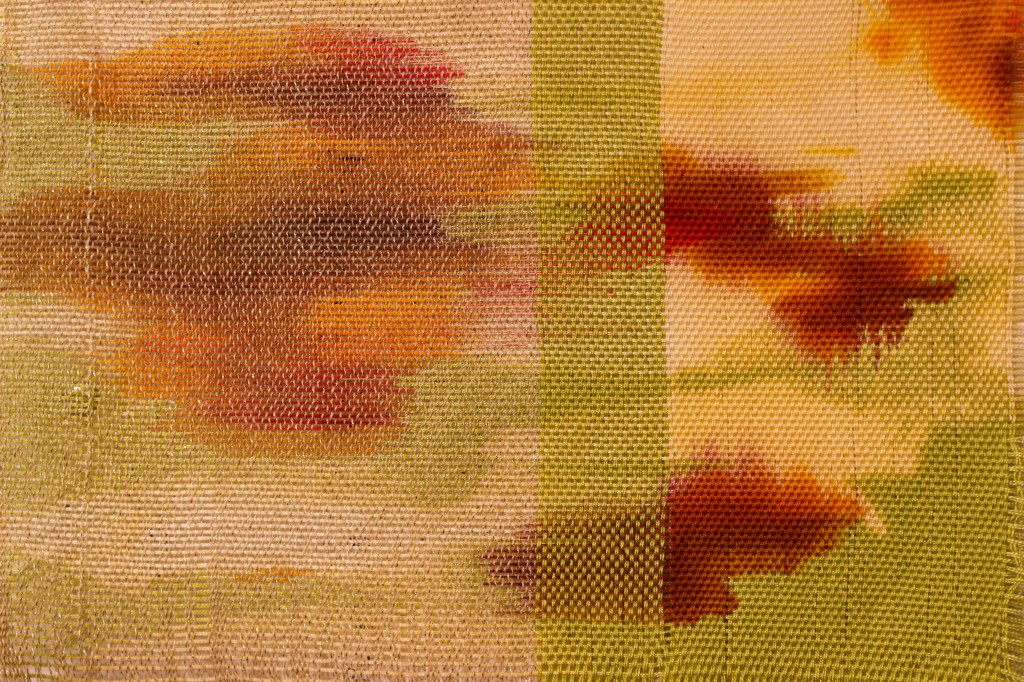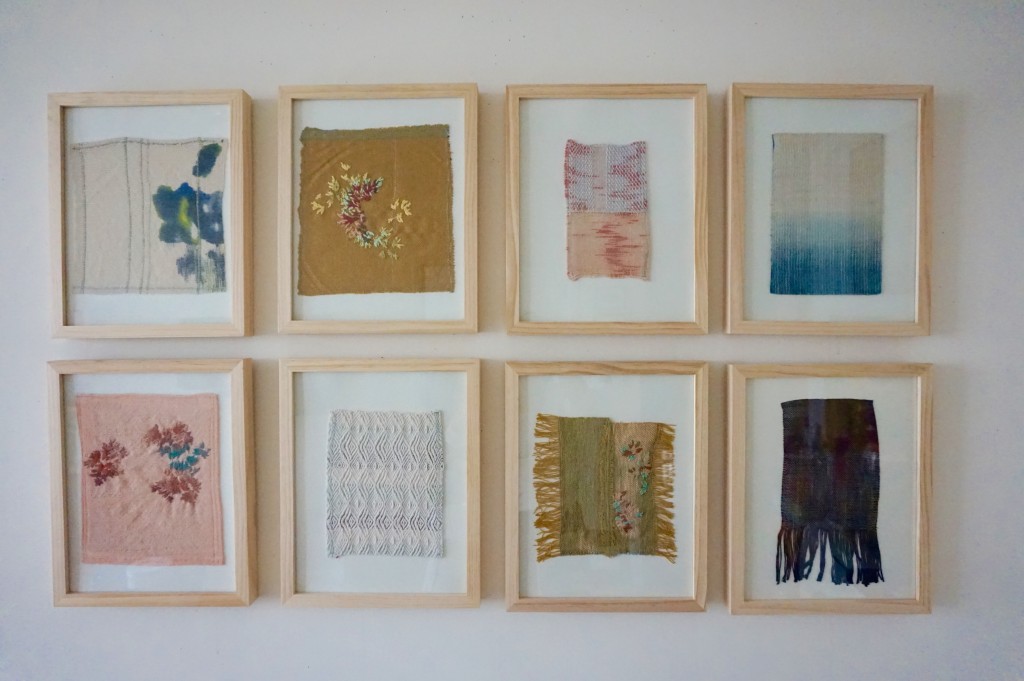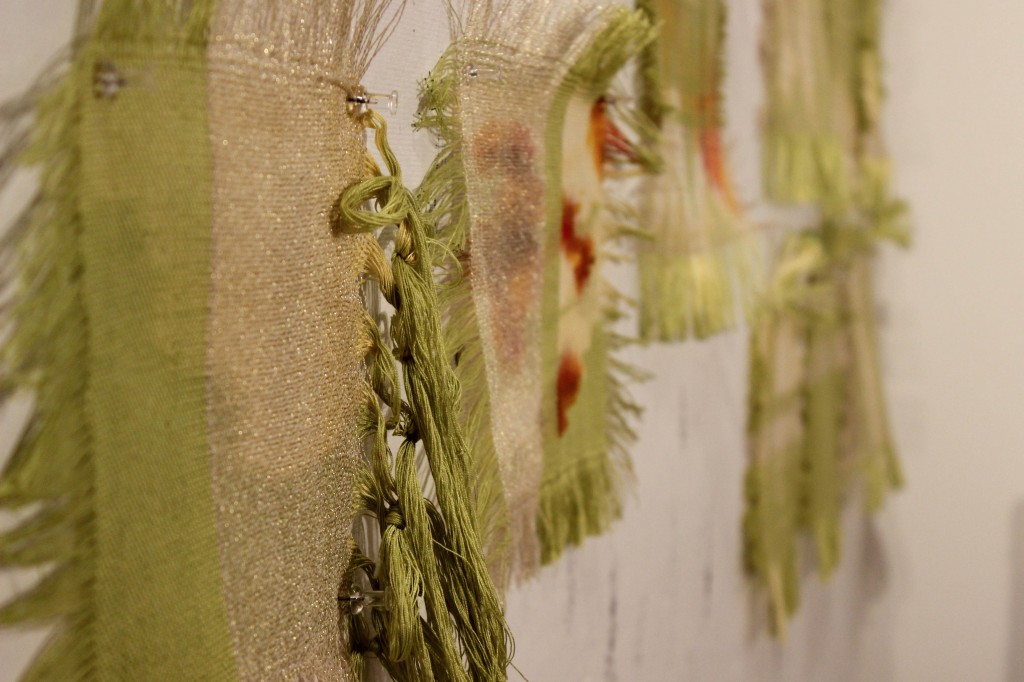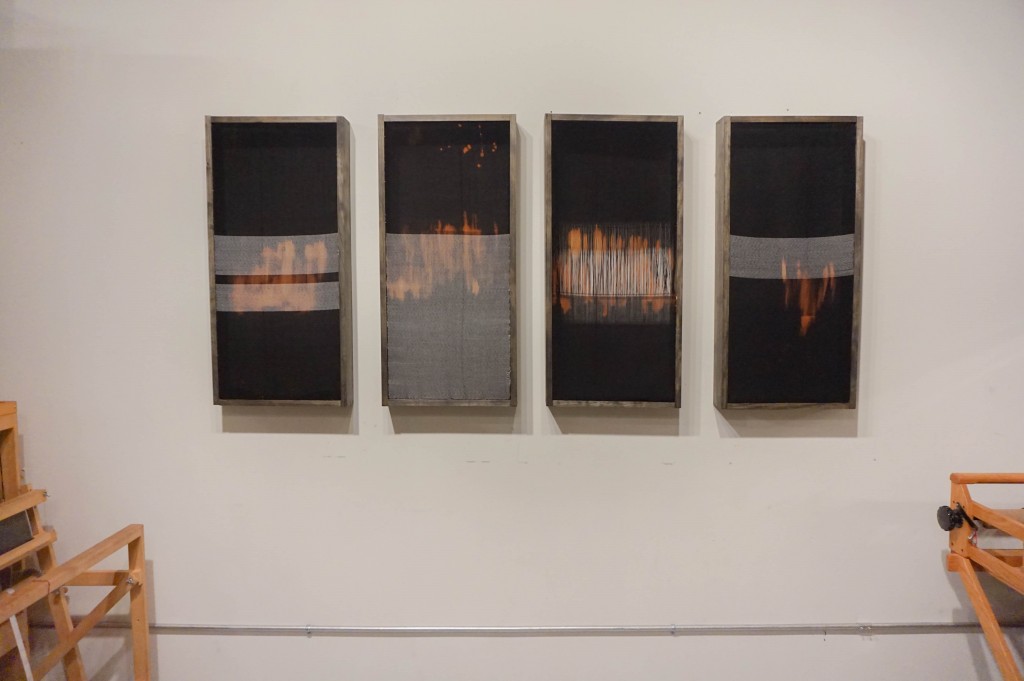AIR Artist Highlight: Victoria Manganiello
Every time I walk past Victoria Manganiello's studio, I see something new. One of our AIR Cycle 7 residents, Victoria is constantly working on a new woven painting, moving around framed samples on her ever-changing wall of woven sketches, and experimenting with sculptural techniques, like weaving objects and metal into her pieces. Her drive and experimental nature isn't limited to the studio. She also pushes for new and innovative artistic expression in her role as the founder and director of No Home Gallery, a nomadic art space whose roots stretch back to her college days. I sat down with Victoria to talk about her work, her experience at TAC, and how she troubles artistic boundaries, such as artist/curator, weaver/painter, and art/craft. I'm excited to share some of her words with you here!
On the allure of weaving: "I am drawn to weaving on a loom and producing cloth because of the process’ structure. The loom itself is a machine, a complicated one, and setting it up precisely is essential. It relies heavily on tension, math and order, but then once you’ve finished with it, you’ve created this extremely organic and soft material, one that every human on the planet interacts with every single day of their lives. I’m drawn to that juxtaposition of order and flexibility."
"Everything that’s woven has warp and weft, and both are needed for structure to exist. I see this woven structure as a metaphor that can be applied to anything really, simple or complicated. Everything in life involves more than one element, and you need the collaboration of elements to have structure. When I’m making, I’m considering this and so I play with tension, which effects the woven structure and its visual composition. If there’s too much tension, something might snap, and if there’s not enough, it might fall apart. I like exploring the possibilities those situations present, both conceptually and physically."
On her different artistic roles: "I have experience in being an artist, a curator, and a producer and the process of curating and producing can often be artworks in and of themselves. For example, No Home Gallery is a nomadic gallery that I started in September of 2014, inspired by a similar project that I did in college called Red Room gallery, where we transformed an unused room into a collaborative gallery space. I loved that experience because it brought an opportunity for collaboration within the arts, rather than simply throwing an exhibition up. When I came to New York after graduating to work for Sotheby’s' contemporary art department, I was feeling very inspired by art still, but yearned for the collaborative element. And so, No Home was born. I manage a group of volunteers and all of the guest curators, artists and hosts who collaborate to execute artistic projects and exhibitions. And I think of that act of being a nomadic gallery as an artwork too."
On using the title "producer": "There’s something about the word curator, at least in our culture and today, that suggests a focus on exhibition design and research, but less on producing an event to be experienced. A curator's not just saying, 'okay, we have eight paintings, where on the wall do they go?' It’s about the message we’re going to communicate. What are the viewers going to experience?, what dialogue do we want to happen in this space?, what will happen to the message and the artwork after this is over? You are doing a lot more than organizing the wall. You’re organizing the space and the time and the people."
On being a painter and weaver: I often refer to [my works] as woven paintings, especially to those people who are not in the fiber arts world. I like the idea of complicating the category of painting, and potentially creating an avenue for textiles to be more a part of the conversation around painting. There are so many painters working with unexpected materials, so I don’t see why fiber is any less viable than paper or found objects, or pencil and charcoal. I think the conversation about craft versus art and how [craft] is or is not accepted in the more formal art world, the commercial art world, is an interesting conversation that I’d like to be part of. I feel very connected to the history of textiles, and I’m very connected to the process of weaving, which historically has not been [tied] to making art objects nearly as much as it’s been connected to making functional objects. So I like the idea of complicating and being part of its evolving history. I hope that people can see my work as within the fiber art/textile art category, as well as the fine art category. There’s something about the word painting that is maybe more inviting to a general audience member. But I’m not sure. This is a topic that I’m conflicted on, and one that I’ve been learning about a lot since being here at TAC."
On her experience at TAC: "The residency has been a really wonderful experience. It’s been really inspiring and nurturing. I’ve felt a really strong sense of pride from the community in us as residents, and confidence in us as artists- a sense of camaraderie. There’s this really great community that’s been formed between the eight of us, sharing a space. It’s really very much in line with the textile arts. I love it when I realize that we’re just a bunch of ladies sitting around a couch spinning wool together- it makes me feel very connected to the history of the medium and of the makers."
To see more of Victoria's work, check out her website and follow her on Instagram @victoriamanganiello.
